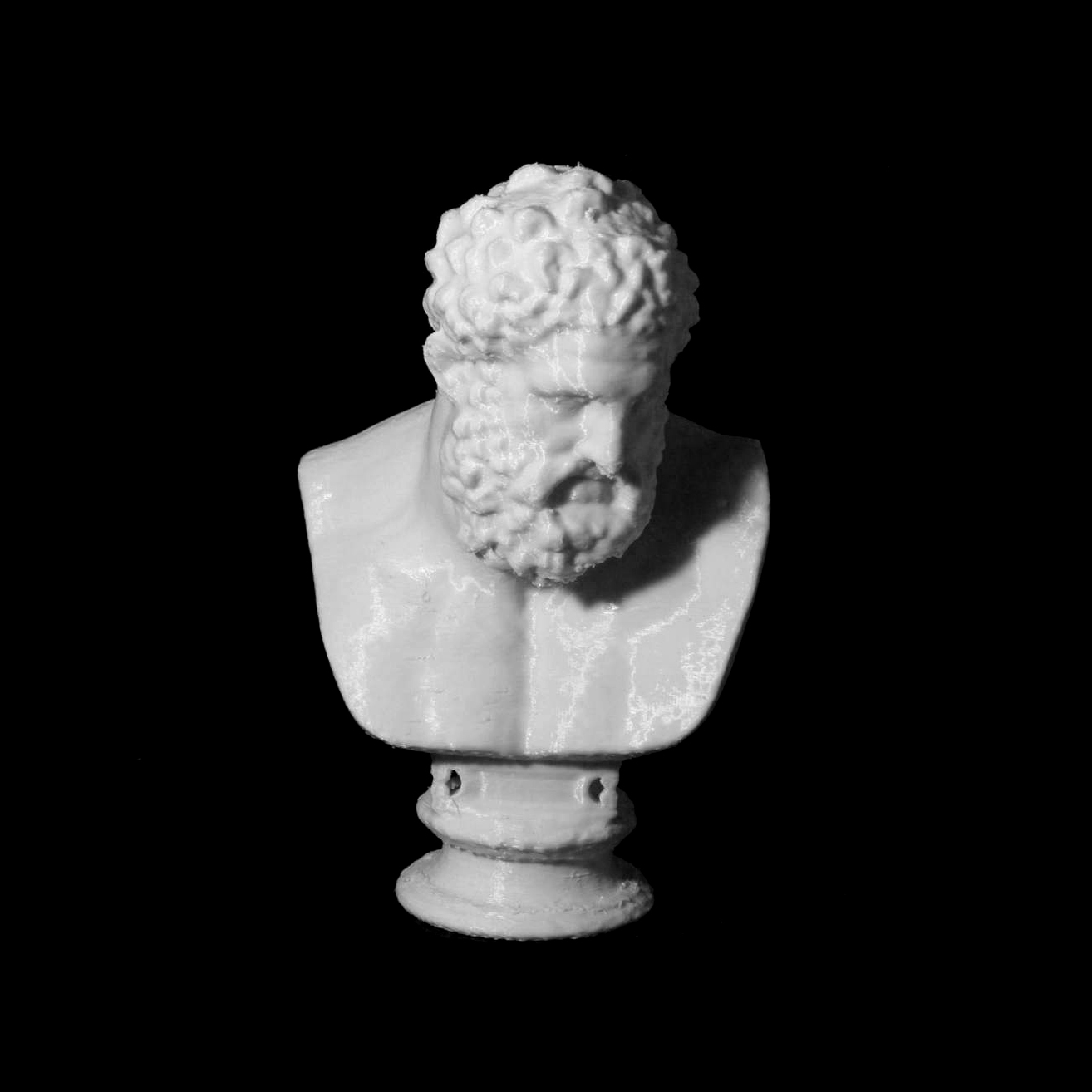
Bust of Hercules
myminifactory
The bust represents the Greek hero Herakles, who was also known as Roman Hercules. The marble used in its creation is believed to be from Pentelic, and some restoration work has been done on it. The head of this bust closely resembles that of the 'Herakles Farnese', a famous statue created by the renowned late classical Greek sculptor Lysippos. Curator's comments are as follows: Jenkins & Sloan 1996 This impressive head of Hercules was presented to the Museum in 1776 by Sir William, who had it restored in Rome. The restoration work was probably supervised by Gavin Hamilton, and it was done on the model of the celebrated Hercules Farnese. This statue was originally in Rome until 1787, when the Farnese collection was transferred to Naples. Sir William owned a statuette copied from the Farnese Hercules, which was said to be created by Pisano. This statuette was brought back to England at the end of Hamilton's stay in Naples and sold later. Sir William wanted his gift to be well displayed in the Museum, so he wrote to Charles Greville on 2 January 1776 from Caserta: 'Do let the Hercules bust be well placed, Hamilton declares that the head is better than that of the Farnese.' In the Museum, during Hamilton's lifetime, the bust was displayed on the Capri altar at the top of the great staircase in old Montagu House. The pedestal support for the bust was designed by Joseph Nollekens. The literature references for this piece include: British Museum Archives, CM, 1784, pp. 1855, 1888; Morrison, no. 61; d'Hancarville, MS Catalogue, i, pp. 5-6; Ramage, 1989a, p. 705, n. 18; Ramage, 1990a, pp. 477-8; Moreno, p. 359. The bust was repaired by Joseph Nollekens.
With this file you will be able to print Bust of Hercules with your 3D printer. Click on the button and save the file on your computer to work, edit or customize your design. You can also find more 3D designs for printers on Bust of Hercules.
